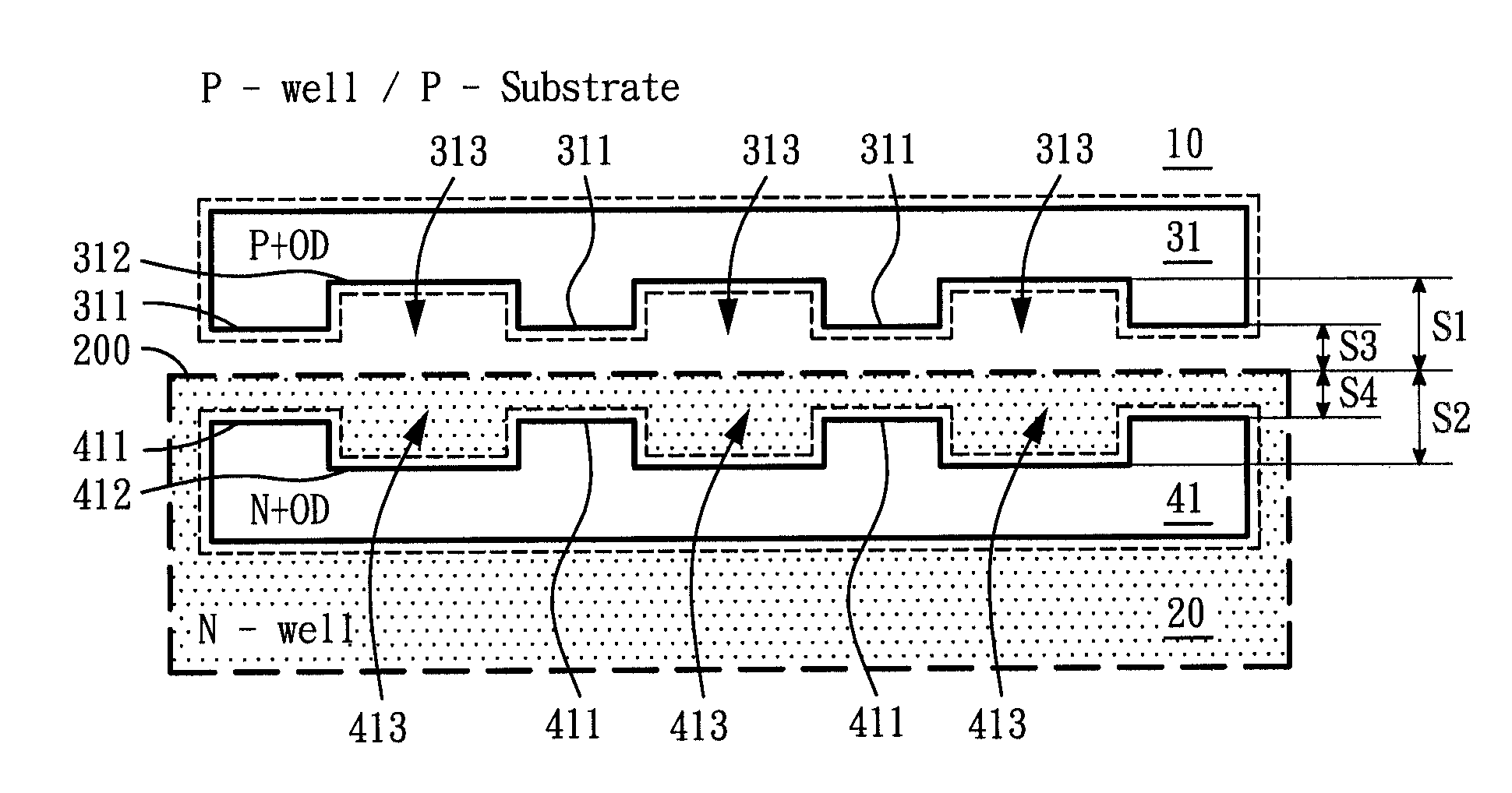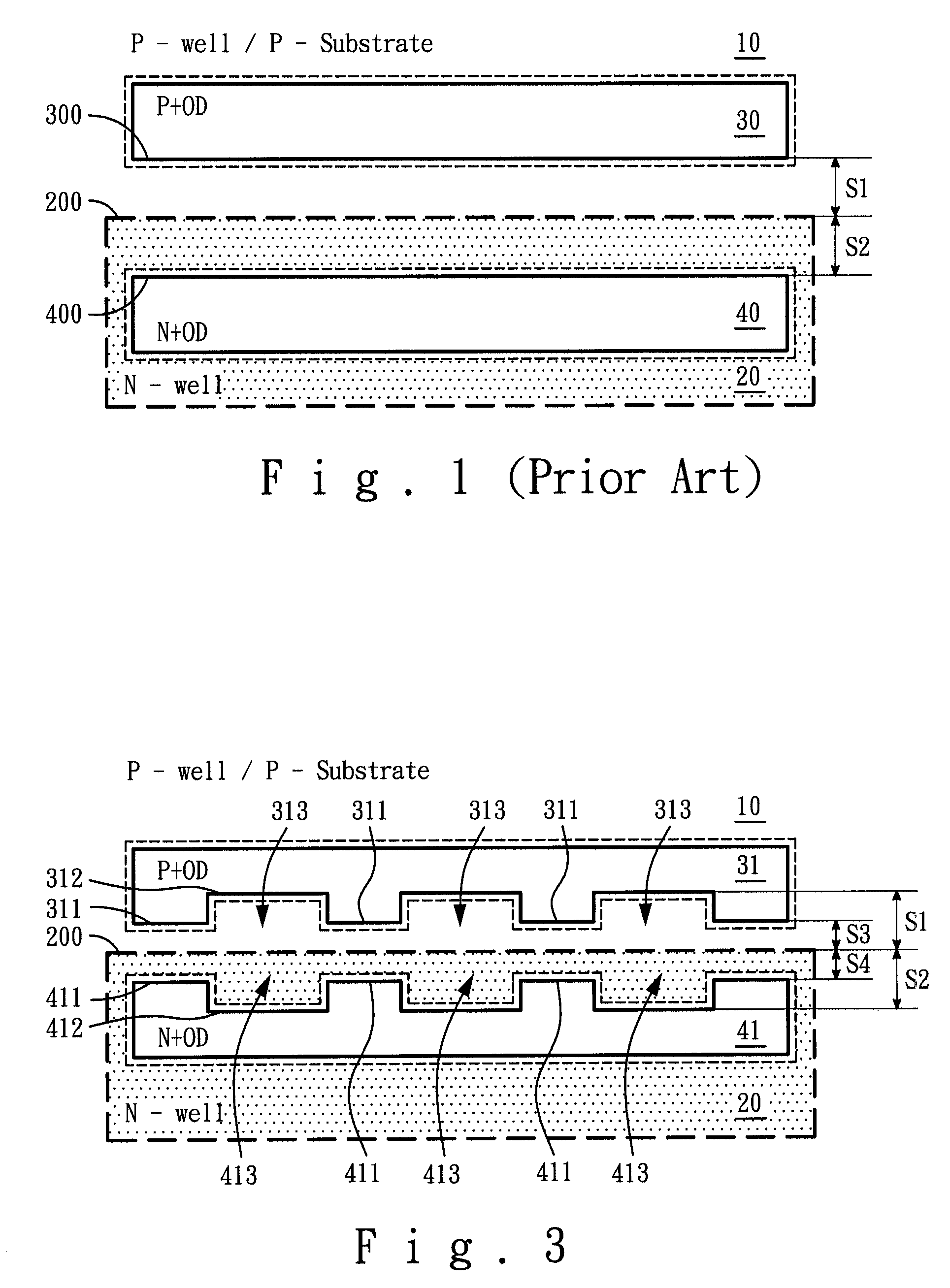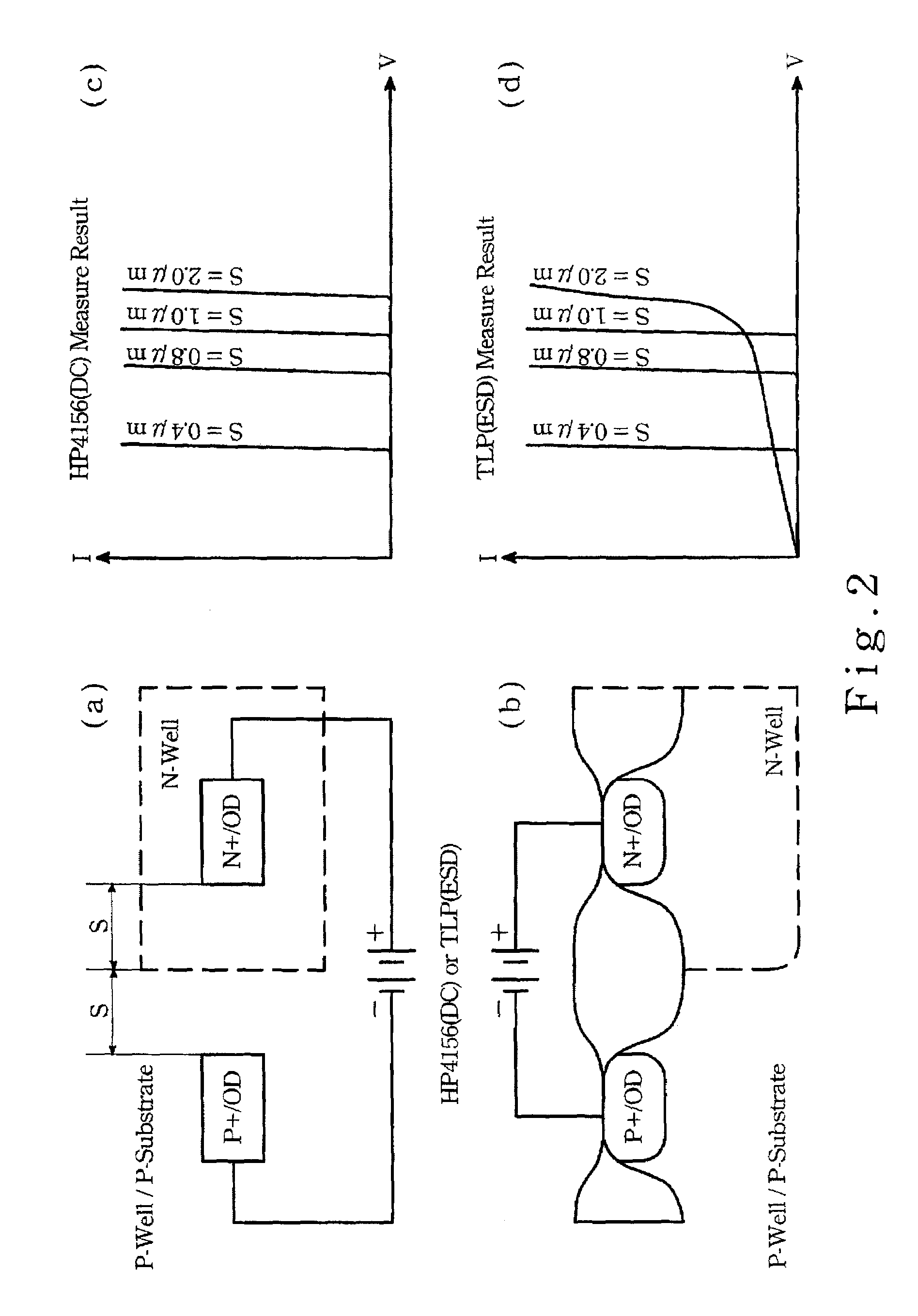ESD device layout for effectively reducing internal circuit area and avoiding ESD and breakdown damage and effectively protecting high voltage IC
a technology of esd device and internal circuit, applied in emergency protective circuit arrangements, transistors, etc., can solve the problems of static electricity and electrostatic discharge, semiconductor devices no longer function or be partially degraded, premature failure, etc., to reduce chip area, curtail esd reliability issue, and improve esd protection capability
- Summary
- Abstract
- Description
- Claims
- Application Information
AI Technical Summary
Benefits of technology
Problems solved by technology
Method used
Image
Examples
first embodiment
[0026]In FIG. 3, a first well 10 of a first type is formed on a semiconductor substrate. A second well 20 of a second type, alongside the first well 10, is also formed. According to one embodiment, a first heavily doped region 31 and a second heavily doped region 41 are formed in the wells 10 and 20. Particularly, the first heavily doped region 31 of the first type is formed in the first well 10. The second heavily doped region 41 of the second type is formed in the second well 20. In one embodiment, the first heavily doped region 31 comprises a p+ type region formed in the p-well 10 having a battlement layout pattern along the boundary between the first and the second wells. The second heavily doped region 41 comprises an n+ type region formed in the n-well 20 having a battlement layout pattern along the boundary between the first and the second wells. In one embodiment, those concave shape regions in the second heavily doped region 41 are opposite to those concave shape regions in...
second embodiment
[0028]In FIG. 4, a first well 10 of a first type is formed on a semiconductor substrate. A second well 20 of a second type, alongside the first well 10, is also formed. According to one embodiment, a first heavily doped regions 30 and a second heavily doped region 41 are formed in the wells 10 and 20. Particularly, the first heavily doped region 30 of the first type is formed in the first well 10. The second heavily doped region 41 of the second type is formed in the second well 20. In one embodiment, the first heavily doped region 30 comprises a p+ type region formed in the p-well 10. The second heavily doped region 41 comprises an n+ type region formed in the n-well 20 having a battlement layout pattern along the boundary between the first and the second wells.
[0029]In FIG. 3, a first well 10 of a first type is formed on a semiconductor substrate. A second well 20 of a second type, alongside the first well 10, is also formed. According to one embodiment, a first heavily doped regi...
third embodiment
[0030]Furthermore, a distance between each ridge 311 of the first heavily doped region 31 and the edge 200 of the second well 20 facing the ridges 311 is S3. A distance between each ridge 411 of the second heavily doped region 41 and the edge 200 of the second well 20 is S4. A distance between a bottom 312 of each recessed concave region 313 and the edge 200 of the second well 20 is S1. A distance between a bottom 412 of each recessed concave region 413 and the edge 200 of the second well 20 is S2. The distances S3 and S4 are arranged to be less than what is typically required by the layout rule of internal circuit. If the DC power noise occurs, the abrupt power noise pulse will breakdown the p-n well junction of the ESD circuit device and discharge ESD current to protect the internal circuit. However, S3 and S4 may not be curtailed unlimitedly. S3 and S4 have to maintain a certain length to ensure the breakdown voltage of the p-n well junction of the ESD circuit device to be greate...
PUM
 Login to View More
Login to View More Abstract
Description
Claims
Application Information
 Login to View More
Login to View More - R&D
- Intellectual Property
- Life Sciences
- Materials
- Tech Scout
- Unparalleled Data Quality
- Higher Quality Content
- 60% Fewer Hallucinations
Browse by: Latest US Patents, China's latest patents, Technical Efficacy Thesaurus, Application Domain, Technology Topic, Popular Technical Reports.
© 2025 PatSnap. All rights reserved.Legal|Privacy policy|Modern Slavery Act Transparency Statement|Sitemap|About US| Contact US: help@patsnap.com



